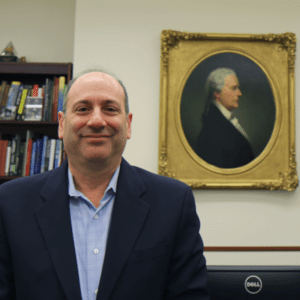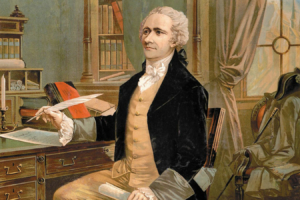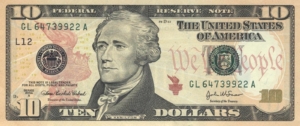DCPA NEWS CENTER
Enjoy the best stories and perspectives from the theatre world today.
Enjoy the best stories and perspectives from the theatre world today.

David Cowen
As the president of the Museum of American Finance, David Cowen is an expert on the American Financial system. The same financial system created by Alexander Hamilton. A portrait of Hamilton hangs above the desk in David’s office. We caught up with David to discuss what exactly some of the lyrics mean and which traces of Hamilton’s financial legacy still exist today. Here is a brief history lesson from him:
“Legacy. What is a legacy?”
The entire financial system is [Hamilton’s] legacy! He set up the system that we live under. Finance is the horse to the economy’s cart and, not only did it not exist when he came here, but we had all the leftover debt and problems from the revolutionary war; he inherited a very messy situation. He comes into office September 11, 1789 and he leaves at the end of January in 1795. He achieved a lot during those six short years in office. His greatest legacy is what he accomplished as our nation’s first Treasury Secretary.
“He took our country from bankruptcy to prosperity. I hate to admit it, but he doesn’t get enough credit for the credit he gave us.”
Before he gets into office, our [nation] is effectively bankrupt. There is all this leftover debt that the Continental Congress raised during the war. Coupled with [that] domestic debt, there’re also state debts; some states were paying the debt off, some were not. Then, there’s also international debt. We had borrowed money from the French who were helping us both militarily and economically. 
Hamilton said, we should honor all of that debt. Why is that amazing? It gives us great credit. We honor the debt, and people now are willing to loan to us. So, in a dozen years when we go to Napoleon and say we want to buy New Orleans, we go to the premier bankers of the day in London, we borrow the money to pay Napoleon, and double the size of our country because we have good credit.
“If New York is in debt, why should Virginia bear it?”
Virginia didn’t have a lot of debt so they wanted to know why they should be paying for Massachusetts. We weren’t really unified as a country, so the Virginians were blocking [Hamilton’s plan]. So then, in my opinion, in the most famous trade in American history, in “the room where it happens,” is that meeting between Jefferson and Madison and Hamilton whereby they trade the capital. There are stories that Jefferson said, “I’m never trading with Hamilton again because I got hoodwinked into this.”
“The issue on the table: Secretary Hamilton’s plan to assume state debt and establish a national bank.”
Hamilton establishes a quasi-central bank. It was called The Bank of the United States, and it had branches. It was 80% private money and 20% government money. How was Hamilton going to pay a judge in South Carolina? Well, he has a branch of the bank there so instead of having to send the money by horse, he can just make a book entry to pay that judge. It makes the ease and process so much better. It’s also where people put their money in, and it can be lent out. This was created by him and passed by Congress and is the only national bank. By the time he leaves office in ‘95, there is a bank that has 5 branches. 
“The ten dollar founding father.”
When Hamilton takes office, we’re using foreign currency. Hamilton decides we’re going to have our own [national currency]. We’re not going to rely on foreign currencies (which do stay in circulation for years), but we’re going to set our own US dollar and have our own currency.
DETAILS
Hamilton
Feb 16 – Mar 27, 2022 • Buell Theatre
